ESG / CSR
Industries
Everything you need to know about fracking
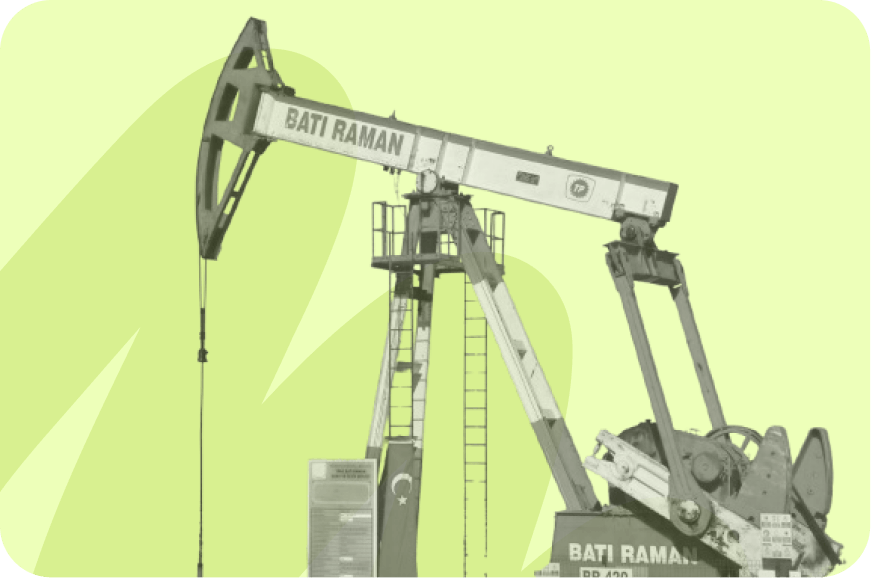


By injecting high-pressure fluid into rock formations, hydraulic fracturing operations have enabled access to vast reserves of oil and gas that were once trapped deep beneath the earth’s surface, revolutionising energy markets and reducing reliance on imported fuels in many regions.
While its ability to boost energy production is undeniable, fracking also finds itself at the centre of heated environmental debates. Critics argue that the process can contaminate groundwater, increase seismic activity, and contribute to greenhouse gas emissions, raising concerns about its long-term sustainability.
In this article, we delve into the complexities of fracking, examining its methods, its role in energy production, and the environmental concerns it raises.
What is fracking?
This technique has transformed the energy sector by enabling access to vast reserves of hydrocarbons that were previously too challenging or too costly to extract.
However, fracking has also been a topic of heated debate due to serious concerns about its environmental impacts. Concerns such as potential groundwater contamination, increased greenhouse gas emissions, and seismic activity, continue to fuel discussions about the sustainability and regulation of fracking.
How does fracking work?
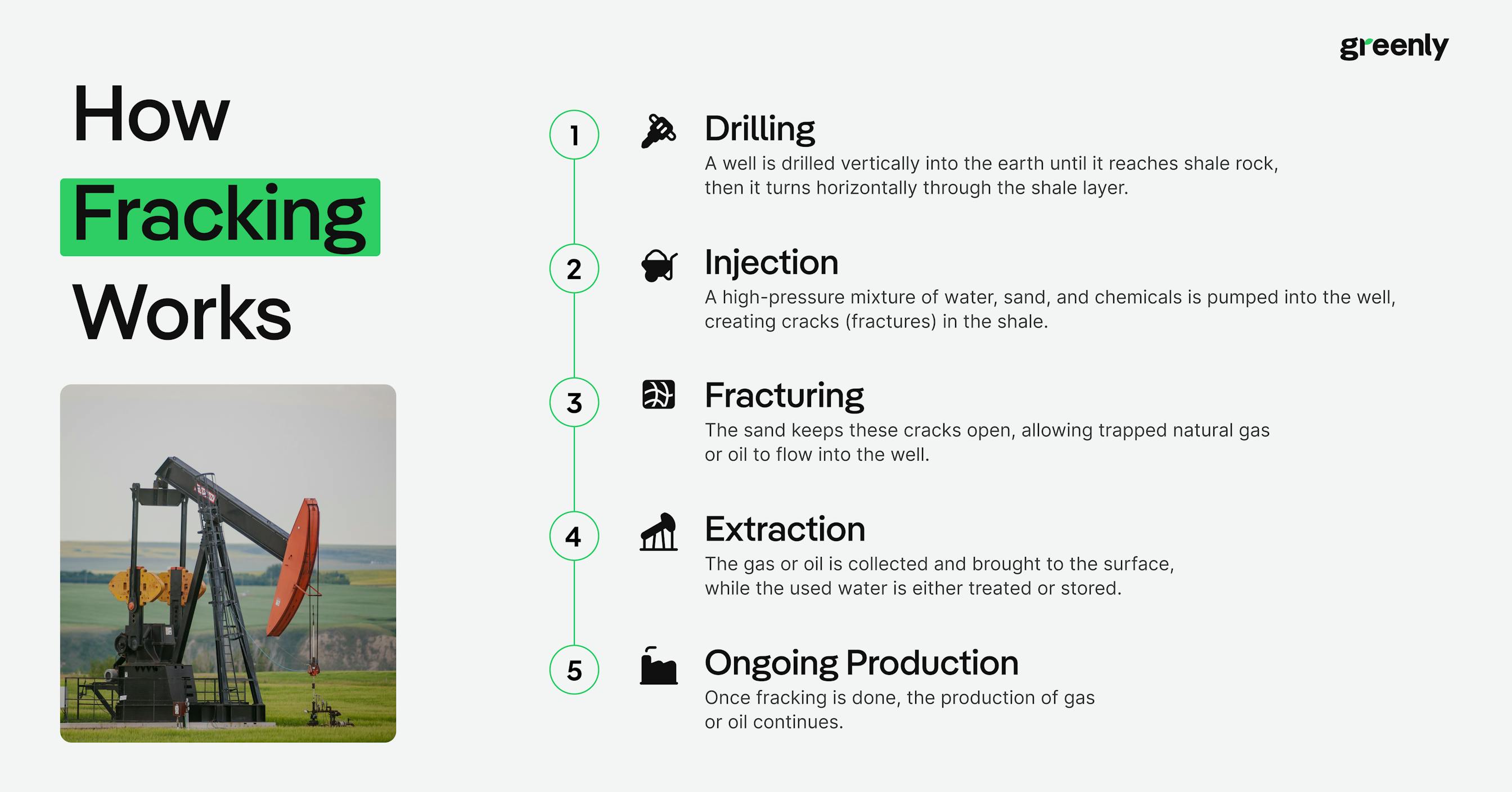

The fracking process begins with drilling a well, typically thousands of feet deep, into the earth until it reaches the targeted area of rock that contains oil or gas. The drill is then turned horizontally to penetrate the rock layer more effectively.
Once the drilling is complete, hydraulic fracturing fluids, a high-pressure mixture of water, sand, and chemicals, are injected into the well. This mixture is central to the fracking process; the water creates pressure to crack the rocks, the sand particles keep the fractures open, and the chemicals facilitate the flow of the oil or gas.
These fractures allow the trapped oil or gas to flow back to the surface. After the fracking process is completed, the gas or oil is collected, and the mixture of water and chemicals (often referred to as 'fracking fluid') is typically stored or disposed of - though this part of the process has raised environmental concerns (more on this later).
Technological advancements in fracking, such as horizontal drilling and multi-stage fracturing, have made shale gas extraction more efficient, allowing resources to be extracted from larger areas than traditional vertical wells.
These innovations have not only increased the feasibility of accessing previously difficult-to-reach reserves but also heightened the scrutiny and regulatory focus on the industry, given its environmental implications.
The history of fracking
The roots of fracking trace back to the 1860s, when Edward A. L. Roberts, serving in the United States Civil War, observed the impact of artillery rounds on narrow streams.
Inspired by this observation, Roberts, after his service, launched the Roberts Petroleum Torpedo Company. His company used an invention known as the "Exploding Torpedo," designed to increase the extraction of oil and gas.
The method involved lowering torpedoes packed with nitroglycerin into an oil well and then sealing the borehole to intensify the subsequent explosion. This innovative method increased oil and gas production, in some cases boosting extraction by up to ten times.
Advancements in technology
After Halliburton was granted a patent for the hydraulic fracturing process there was a surge in fracking operations. However, the true advancement in fracking came with the introduction of horizontal drilling in the 1980s.
This technique allowed for a greater exposure of the rock formation, increasing the efficiency and output of the fracking process. It was particularly transformative for extracting gas from shale formations, a resource that hadn't been economically viable before.
The shale boom
The turn of the century marked the beginning of what is often referred to as the 'shale boom'.
Advancements in drilling and fracturing technologies made it feasible to extract oil and gas from shale formations at a commercially viable rate, leading to the rapid expansion of the shale gas industry. This era witnessed a significant shift in the energy industry, with countries like the United States drastically increasing their domestic production of oil and natural gas and reducing their dependence on foreign oil.
Global expansion and controversy
As the 21st century progressed, fracking spread globally, with many countries expanding oil and gas development by extracting their shale reserves. However, this expansion was met with increasing environmental concerns.
Issues such as potential groundwater contamination, seismic activities (earthquakes), and methane emissions brought fracking under intense scrutiny. Debates around these concerns have influenced regulatory policies and public perception of the industry, and fracking is considered to be a controversial practice in many regions to this day.
Environmental concerns about fracking
Groundwater contamination
One of the main environmental concerns associated with fracking is the potential contamination of groundwater.
Chemicals used in the fracking process can seep into underground water reserves, posing risks to drinking water quality. The integrity of the fracking wells is a critical factor in preventing contamination. Cases of poor well construction can lead to the leakage of fracking fluids into groundwater.
Air quality and greenhouse gas emissions
Fracking contributes to air pollution in several ways.
The process can release volatile organic compounds (VOCs), particulate matter, and other pollutants that impact air quality and human health. Additionally, methane, a potent greenhouse gas, can escape into the atmosphere during drilling and extraction.
Water usage and management
Fracking requires significant amounts of water, which can pose challenges in water-scarce regions.
The management of this water, particularly the disposal of used fracking fluid, is another environmental concern. While some of the water is recycled, a substantial amount becomes wastewater, which needs to be treated or disposed of safely to prevent contamination.
Induced seismicity
Another notable concern is the link between fracking and induced seismic activity.
The injection of wastewater from fracking into deep underground wells has been linked to increased seismic events, even in areas not previously known for significant earthquake activity.
Ecological impact
Fracking operations can also have direct impacts on local ecosystems.
Land clearing for drilling sites, increased noise pollution, and habitat fragmentation can adversely affect wildlife and biodiversity in the areas surrounding fracking operations.
Addressing environmental concerns
In response to these environmental concerns, the industry and regulatory bodies have been working to develop safer fracking practices.
This includes stricter regulations on well construction, improved wastewater management techniques, and the development of more accurate methods to monitor air and water quality around fracking sites.

Alternative extraction methods
While fracking has transformed the oil and gas industry, it is just one of several methods used to extract fossil fuels.
Below is a brief overview of alternative extraction methods and how they compare to fracking in terms of environmental and economic impacts:
| Method | Details | Environmental Impact |
|---|---|---|
| Conventional drilling | Uses vertical wells to access oil and gas in easily reachable reservoirs. | Less disruptive to subsurface geology than fracking but can lead to oil spills, habitat destruction, and groundwater contamination. |
| Offshore drilling | Extracts oil and gas from beneath the ocean floor using rigs or platforms. | Risks include oil spills, marine habitat disruption, and air pollution. High-profile disasters like the Deepwater Horizon spill highlight its potential for harm. |
| Oil sands extraction | Involves surface mining or in situ methods to separate bitumen from sand, clay, and water. | Highly carbon-intensive, requires significant water and energy, and causes large-scale land disruption and toxic tailings ponds. |
| Enhanced oil recovery (EOR) | Injects substances like water, steam, or CO2 into wells to extract additional oil. | Smaller surface footprint than fracking; can store CO2, reducing emissions. However, water and energy usage remain concerns. |
| Fracking | Injects high-pressure fluid into rock formations to release shale gas and oil. | Significant water usage, methane emissions, and induced seismic activity. Enables access to larger reserves but comes with substantial environmental trade-offs. |
What are the advantages of fracking
Despite the adverse environmental impacts, fracking brings several key advantages, including:
| Advantage | Details |
|---|---|
| Economic benefits | Fracking drives economic growth, especially in regions with large shale deposits. It creates jobs not only in drilling and extraction but also in supporting industries, stimulating local economies and fostering sectoral growth. |
| Lower energy prices | By increasing the supply of natural gas and oil, fracking has led to lower energy prices for consumers. This benefits households and businesses by reducing utility bills and the cost of goods and services. |
| Energy independence | Fracking helps countries reduce reliance on foreign oil imports, enabling greater control over energy resources, enhancing national security, and mitigating geopolitical vulnerabilities. |
| Reduced carbon emissions | Natural gas from fracking emits half as much carbon dioxide as coal when burned, making it a cleaner transition fuel towards renewables. However, it is still a fossil fuel and contributes to greenhouse gas emissions. |
Legal and regulatory landscape of fracking
United States
Fracking is big business in the United States, with 64 % of all US oil and 79 % of natural gas coming from fracking.
Fracking is regulated through a combination of federal and state laws. Federal regulations like the Clean Water Act and the Safe Drinking Water Act provide a framework, but many specifics are left to state governments. States therefore have significant leeway when it comes to regulating aspects like drilling permits and environmental assessments.
According to industry estimates, the shale boom contributed trillions of dollars to the U.S. economy over the past decade.
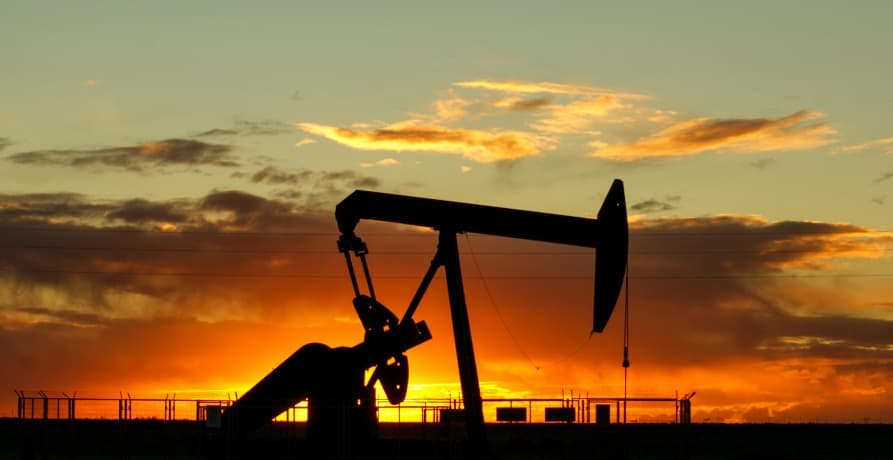
European Union
Within the European Union, the approach to fracking has been generally cautious. Some member countries, such as France and Germany, have imposed bans or stringent restrictions due to environmental and public health concerns.
The European Union has adopted a recommendation of minimum principles when employing high-volume hydraulic fracturing. These principles include environmental impact assessments, analysis of air, water, and soil quality, the capturing of gases to control air emissions, transparency concerning chemicals used, and the utilisation of best practice drilling methods.
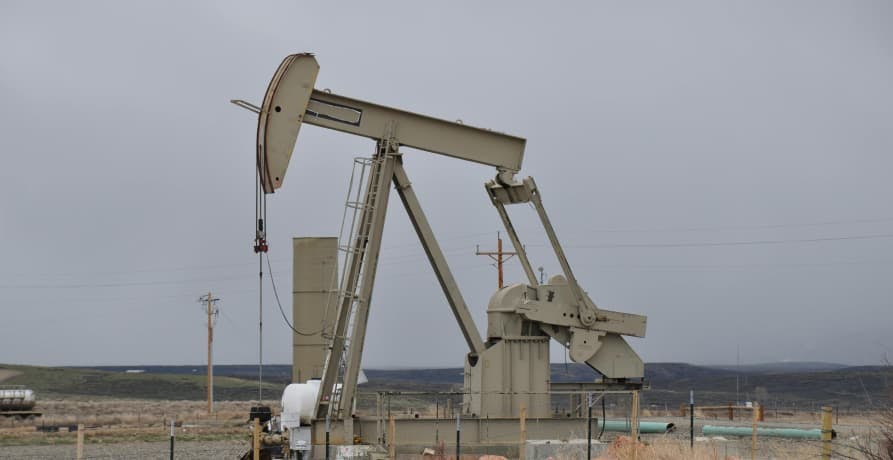
United Kingdom
The UK's relationship with fracking has been complex and evolving.
Initially, the UK government considered fracking a potential solution to decreasing domestic energy production and increasing reliance on overseas energy sources. However, concerns over induced seismic activity led to a suspension of fracking activities in England in 2019.
This decision reflected not just the scientific evidence linking fracking to earthquakes but also considerable public opposition on environmental grounds. Regulatory oversight from the Oil and Gas Authority (now the North Sea Transition Authority) played a key role in assessing the risks associated with fracking. The UK Conservative Government briefly lifted the fracking ban in September 2022, before implementing the ban once more just a short month later.
Concerns over induced seismic activity in Lancashire led to a moratorium on fracking in 2019, after tremors were linked to nearby hydraulic fracturing operations. Public resistance further cemented the ban, highlighting the environmental risks associated with fracking in densely populated areas.
Evolving regulatory frameworks
Across the world, regulatory frameworks are evolving to better address the environmental impacts of fracking. This includes increased transparency in disclosing the chemicals used, stricter water management rules, and more comprehensive monitoring of induced seismic activity and air pollution.
Fracking under President Trump’s administration
Donald Trump’s presidency from 2016 to 2020 provides a clear indication of how his administration might approach fracking now.
During his first term, Trump was a staunch advocate for domestic energy production, with fracking playing a central role in his "energy dominance" agenda. His administration's policies prioritized the expansion of fracking and the broader oil and gas industry, rolling back environmental protections to facilitate growth.
Pro-Fracking Policies in 2016–2020
Trump's first term saw significant efforts to deregulate the energy industry. His administration:
- Removed restrictions on federal lands: Opened millions of acres of federal land and offshore areas for fracking and oil exploration, particularly targeting regions such as the Arctic National Wildlife Refuge and key shale basins.
- Streamlined permitting: Accelerated the approval process for new fracking projects, making it easier for companies to drill on public and private lands.
- Rolled back environmental protections: Repealed Obama-era regulations, including the Clean Power Plan and methane emission rules, arguing that they hindered energy development.
These measures were framed as part of Trump’s promise to achieve "American energy independence" and create jobs in energy-producing states like Texas, North Dakota, and Pennsylvania.
Environmental Concerns
While Trump's policies boosted energy production, they also sparked significant criticism from environmental advocates. Key concerns included:
- Methane emissions: The rollback of regulations aimed at controlling methane leaks from oil and gas operations led to increased greenhouse gas emissions.
- Groundwater risks: The rapid expansion of fracking raised fears of water contamination in areas like Pennsylvania’s Marcellus Shale.
- Climate change: Critics argued that Trump’s pro-fossil fuel stance hindered global efforts to address climate change and transition to renewable energy sources.
Public and Political Response
Fracking became a politically charged issue during Trump’s first term. His support for the industry appealed to workers and communities reliant on energy production but faced opposition from environmental groups and many Democratic leaders.
Swing states like Pennsylvania remained battlegrounds for the debate over fracking’s economic benefits versus its environmental costs.
Looking Ahead
Trump’s strong support for fracking during his 2016–2020 presidency provides a clear indication of what to expect in his upcoming term. His focus on deregulation, energy independence, and job creation is likely to continue shaping U.S. energy policy.
However, the environmental and social concerns tied to fracking are also likely to reignite debates.
Technological advancements
In recent decades the fracking industry has seen significant technological advancements aimed at improving efficiency and reducing environmental impacts. These innovations not only enhance the extraction process but are also helping to address some of the key concerns associated with fracking:
Advanced hydraulic fracturing techniques
Modern fracking uses more precise hydraulic fracturing techniques, allowing for better control over the fracturing process. Innovations in this area include variable-rate fracturing, where the pressure and composition of the fracking fluid can be adjusted for optimal fracture creation, minimising the environmental impact.
Improved drilling technologies
The adoption of horizontal oil and gas drilling has been a game-changer in fracking, allowing for a single well to access a much larger area of the shale formation. This technique reduces the number of drilling sites required, which minimises the surface footprint and environmental disruption.
Eco-friendly fracking fluids
Research and development have led to the creation of more eco-friendly fracking fluids. These new formulations aim to reduce or eliminate harmful chemicals and use substances that are less toxic and more biodegradable, reducing the risk of environmental contamination.
Water recycling and management
Technologies for recycling and reusing water in the fracking process have improved, reducing the overall water consumption and the need for water disposal. Innovations in water treatment technologies also allow for more efficient and safer handling of wastewater.
Real-time data and monitoring
Advancements in sensor technology and data analysis have enabled real-time monitoring of fracking operations. This includes tracking the integrity of wells, measuring seismic activity, and monitoring air and water quality, allowing for immediate response to potential issues.
Emission reduction technologies
Efforts to reduce emissions associated with fracking include technologies to capture methane leaks and more efficient flaring systems. These advancements are helping to minimise the carbon footprint of fracking operations.
Automation and AI in fracking
The integration of automation and AI in fracking operations has led to more efficient and safer practices. For example, AI algorithms can analyse geological data to identify the best drilling locations and optimise extraction processes, reducing the chances of error and enhancing overall productivity.
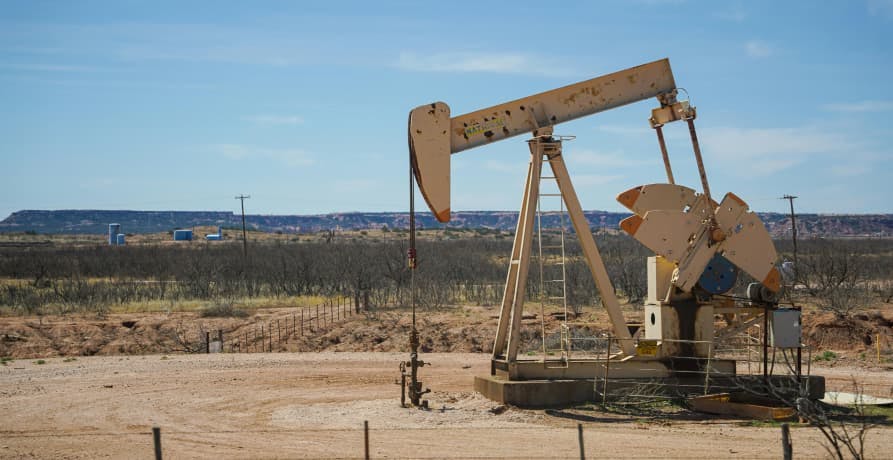
The future of fracking
One of the primary challenges facing fracking is balancing the growing global demand for energy with increasing environmental concerns.
As countries work to meet their energy needs while also addressing climate change, the role of fracking will be increasingly scrutinised. Regardless of how environmentally sensitive the fracking process becomes, the fact of the matter is that fracking removes fossil fuels from the earth, and fossil fuels are not a clean source of energy. They produce harmful greenhouse gas emissions that contribute to global warming.
Crucially, the effectiveness of natural gas in facilitating a smoother transition to renewables will depend on how well it can balance immediate energy demands with the need to reduce carbon emissions. In this context, the future role of fracking, and how it aligns with global sustainability goals, will likely remain highly controversial and changeable.







